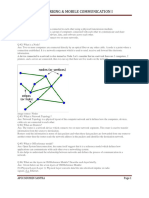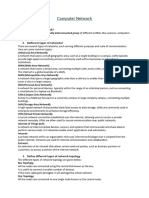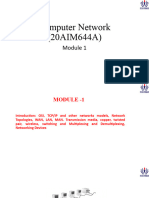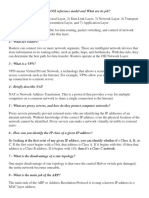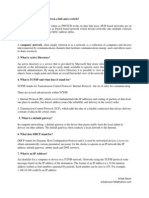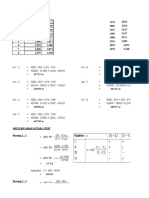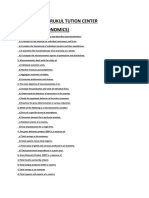0% found this document useful (0 votes)
3 views27 pagesComputer Network Interview Question
The document provides an overview of computer networks, defining various types such as PAN, LAN, MAN, WAN, and VPN, along with their characteristics. It explains network topologies, the OSI model with its seven layers, and key protocols like HTTP, TCP, UDP, ICMP, ARP, FTP, and DNS. Additionally, it clarifies the differences between IP and MAC addresses.
Uploaded by
2103013132Copyright
© © All Rights Reserved
We take content rights seriously. If you suspect this is your content, claim it here.
Available Formats
Download as PDF, TXT or read online on Scribd
0% found this document useful (0 votes)
3 views27 pagesComputer Network Interview Question
The document provides an overview of computer networks, defining various types such as PAN, LAN, MAN, WAN, and VPN, along with their characteristics. It explains network topologies, the OSI model with its seven layers, and key protocols like HTTP, TCP, UDP, ICMP, ARP, FTP, and DNS. Additionally, it clarifies the differences between IP and MAC addresses.
Uploaded by
2103013132Copyright
© © All Rights Reserved
We take content rights seriously. If you suspect this is your content, claim it here.
Available Formats
Download as PDF, TXT or read online on Scribd
/ 27



